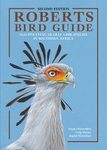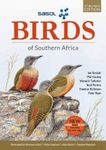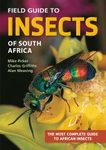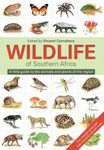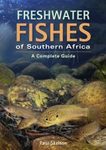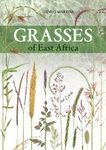![50 Top Birding Sites in Kenya 50 Top Birding Sites in Kenya]()
Click to have a closer look
About this book
Customer reviews
Related titles
About this book
Kenya is home to 1,060 bird species and boasts many globally important birding areas. This, the first detailed guide to the country's best birding sites, is the perfect companion to any bird field guide. 50 Top Birding Sites in Kenya will help both local and visiting birders to locate the key species in each area, including the sought-after 'specials' and endemics.
Top 50 Birding Sites In Kenya offers:
- a detailed map for each site with specific guidance on what to look for and where
- information about the birds likely to be seen
- descriptions of each site, indicating the plants and wildlife that may be encountered in addition to the birds
- tips for planning your trip
- road directions to each site
Customer Reviews (1)
-
Useful, compact and well laid out
By
Gehan de Silva Wijeyeratne
23 Jun 2019
Written for Paperback
This book is one I instinctively took a great liking to for the portable size and shape and excellent layout with good photographs of sites and birds that make you want to go there. The text is also very good, with just the right amount of detail and well researched with field visits. Many books in the genre of where to watch birds or wildlife, tend to be functionally useful but can be rather dull to look at. This book is different. One reason I think is the size and shape. It’s not a chunky tome over-burdened with a listing of every bird or plant or animals of interest to wildlife enthusiasts at a site. Many books suffer from over detail and appear to be a compilation of species lists at sites. This book targets the key birds and mentions a few other notable species, usually mammals. So, it is digestible when browsing. The other pleasing feature is that the use of pictures that show what can be expected at some of the lesser known sites. Is it a mangrove with a boardwalk or a beautiful cloud forest plateau? It’s good to be able to visualise a site from pictures. Also, the maps are functionally useful but at the same time simple and uncluttered. This book will set a benchmark for books of this genre.
The meat of this book encompasses the top 50 birding sites. What a mouth-watering range of sites from city parks and arboretums to vast national parks with sweeping mountains with their peaks often covered in mist. I can see even frequent visitors and residents finding a copy of this book useful. The major national parks are known well enough. But the real value of this book is that it has details of several important sites which are not visited by the package tourism market but are beautiful places with interesting birds and other wildlife. It also has at least for me, some excellent tips such as the Nairobi Arboretum; a place to see birds as well as learn the trees.
The site accounts follow a standard format which introduces the site and has some standard category headings covering Habitat, Getting There, The Birding and Other Wildlife. Many years ago, I lead authored the first detailed site guide to Sri Lanka which was published by the Oriental Bird Club. I only know too well how much work it takes to write the practical information on how to get there and where to stay. There is no substitute to making multiple visits to sites. Even then, details on access and accommodation are prone to change suddenly. One heavy monsoon can wash away a road rendering a site inaccessible for months or years until roads are repaired, or the only decent place to stay closes. The practical travel information has quite obviously been researched well from multiple visits. In this book where possible, websites are also provided for both providers of services as well as providers of information which make it easier for prospective visitors researching a trip. I have travelled in Kenya as both a backpacker (many years ago) as well as a safari tourist where everything had been organised for me. A book like this helps with trip planning whichever the mode of travel.
The birding section in the site accounts has the birds in black boldface or in brown boldface for specialities. This helps those skimming the text for target species. It takes skill to know what to leave out to avoid it being a laborious list of everything. The author has done well to keep this compact. The section on other wildlife is also succinct and to the point. If a site is not great for mammals, it says so. This is good as it helps with planning a trip and manage expectations.
The front section is intelligently designed and thoughtfully written. The contents page lists the 50 sites under eight category headings including ‘Around Nairobi’ and ‘The central highlands’. Facing this is a map showing the 50 numbered sites. The first paragraph in the introduction is impactful, Kenya has 1,060 species recorded; half that recorded in Africa and a team of three birders on one day recorded 342 species (seeing 330) without using tape lures. Wow and great messaging.
Three pages offer a bite-sized introduction to different habitats accompanied by pictures. Four pages in the section ‘Planning Your Visit’ have practical advice on when to travel and the usual guidance on rainfall, temperature etc. but also useful information for independent travellers on obtaining permits, booking accommodation and on how to find a local guide. The ‘How to get Involved’ section has useful tips on how to be more involved with the Kenyan birding community including details of regular weekly and monthly birding and nature walks in Nairobi that will be useful for resident locals and expats. In London for example there are many such walks taking place almost every week organised by the London Bird Club (which I currently chair) as well as the Marylebone Birdwatching Society and the RSPB Central London Local Group. However, I have not found it easy to find details of similar groups when travelling to many world cities. I was therefore pleasantly surprised to find out about these in Kenya. It may also be useful for people who travel to Kenya regularly on business and have the time to fit in some birding. The end sections include a useful list of references and a useful index, so for example you can look up every site which references African Finfoot.
This is the kind of book that makes you want to go to a country and go back again and again. It is the type of book that a tourism authority should be handing out in bundles at events such as the British Bird Watching Fair in Rutland in the UK or at consumer fairs such as Destinations in London. For Kenya’s sake, I hope their tourism authority has some smart people working for it to revive tourism and who can leverage a fantastic and affordable book like this. Catherine Ngarachu and the publisher have done a terrific job. For the sake of completeness, I will add that I do not know the author. My admiration for this book is coming as someone who has birded in Kenya and been involved in wildlife tourism elsewhere from both a commercial and conservation NGO perspective. I can therefore appreciate how good this little book is. As one written by an independent, expert birder it has a lot more credibility than a mountain of tourism board literature.
5 of 5 found this helpful
-
Was this helpful to you? Yes No






















